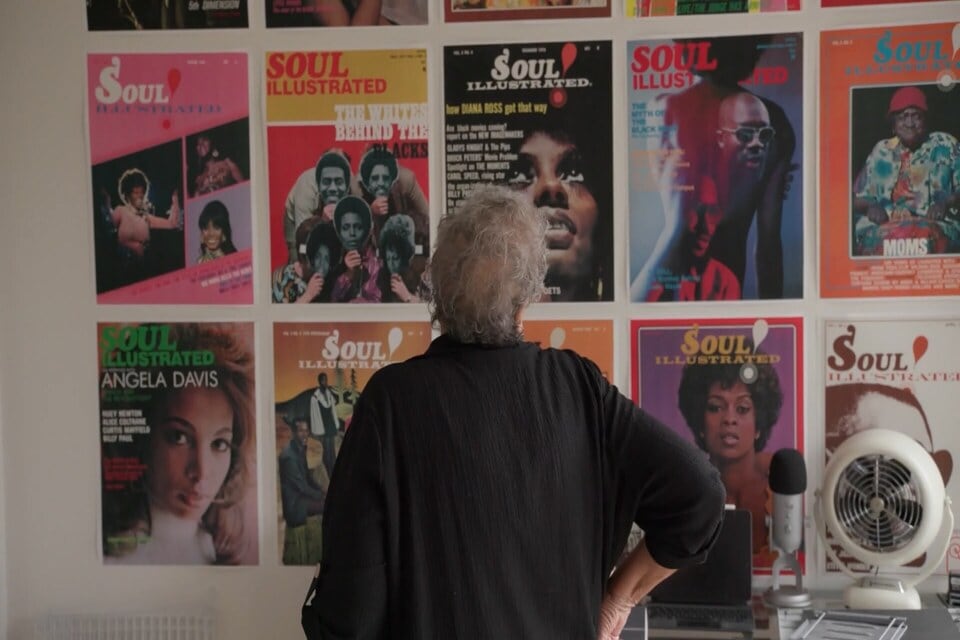Arts and Culture | Film and Television
Athena Film Festival review: ‘Who in the Hell is Regina Jones?’ answers its titular question

By Weigel Production / CourtesySOUL Newspaper co-founder Regina Jones finally shares her story in “Who in the Hell is Regina Jones?”By Taylor Graham • April 1, 2025 at 2:23 AM
By Taylor Graham • April 1, 2025 at 2:23 AM
Adapting the life story of CEO, author, and publisher Regina Jones for the silver screen is just about as ambitious a task as Jones’ career. Still, “Who in the Hell is Regina Jones?” successfully transposes her ambition and life with confidence and care.
Screened on March 8 at the Athena Film Festival, the documentary co-directed by Billy Miossi and Soraya Sélène shares SOUL Newspaper co-founder Regina Jones’ inspiring and long overlooked story.
The biography follows Jones in both the past and present, chronicling her life as a mother of five while running SOUL Newspaper alongside her husband, Ken Jones. The national publication showcased musical achievement in the Black community, predating the music and pop culture magazine Rolling Stone.
SOUL was a product of Jones’ husband’s aspirations to be a news reporter and her experience as a Los Angeles Police Department dispatcher who answered the distress call for what became the Watts Rebellion—a six-day period of protest and rioting in response to the LAPD’s racist and abusive treatment toward Black people. The couple founded SOUL as a way of bringing hope to their neighborhood.
In addition to underlining the birth and significance of SOUL, the film details Jones’ struggles as a Black woman who took on immense invisible labor. She endured the burden of being Black in white spaces with little to no recognition—that is, until now.
The film’s present-day scenes are separated by intertitles that help pace the narrative by citing the season and year in which each scene was shot, starting with “Spring 2022” and proceeding with “Summer 2022” and “Fall 2022.” Jones’ personal archives of Super 8 millimeter film footage, SOUL Newspaper issues, and photographs are intercut and overlayed within these three chronological sequences, doubling as flashbacks and scrapbook-esque visual aids to supplement the oral storytelling.
The film doesn’t shy away from covering the more challenging chapters of Jones’s life, including the simultaneous loss of her marriage, the SOUL Newspaper, and her mother. Throughout, Jones candidly speaks to how she is nearly incapable of crying, afraid she’ll “drown” in her tears, having held them all in for so long. That said, scenes that showcase her raw vulnerability are often followed by sweet moments with her two dogs, providing a much-needed respite from the hardships.
The documentary includes intimate interviews with some of Jones’ children and her grandson, Matt Jones, who has taken to helping archive and preserve SOUL. Matt describes how Jones doesn’t realize her impact on people and emphasizes the importance of sharing her story.
The documentary features interviews from two former SOUL contributors: photographer Bruce Talamon and journalist Steve Ivory. Talamon recalled the “crazy” amount of access he had while working for the publication, including the opportunity to photograph singer-songwriter Donna Summer. Ivory expressed a similar sentiment, sharing an anecdote about a time when someone asked him what school he attended, to which he replied, “I went to SOUL University.”
As Jones reflects on her life, the documentary captures glimpses of her unapologetic charisma and sense of humor. In the setting of her own home, Jones flips through scrapbook pages in her dining room and, referring to a photo of one of her children happily indulging in cake, rhetorically asks, “Was that cake good?”
The sound design includes an immersive array of sound effects, audio recordings, and voiceovers. For example, camera shutters and film reel sound effects accompany Jones’ archival footage throughout, as do the typing and pen-scratching noises that make the on-screen text dynamic.
The documentary also includes audio recordings from Jones’ interviews with SOUL Newspapers’ high-profile clients, including Mick Jagger and Aretha Franklin. Jones’ present-day readings of material—such as an excerpt from her book “Pieces of My Life,” and an old letter she wrote to her husband—are used as voice-overs, making the presentation of archival footage and photographs more compelling.
The film often cleverly transitions between diegetic and non-diegetic sound. For example, as Jones details in a present-day interview how, early in their relationship, her husband gifted her a vinyl of “So Rare” by Jimmy Dorsey, the song begins playing as non-diegetic background music.
Overall, the editing routinely utilizes Jones’ archives to draw parallels between past and present. For example, old family photos from previous birthdays intercut the final few current-day scenes of Jones’ 80th birthday.
As for cinematography, the documentary leans on the classic opening, establishing-shot formula to begin sequences—particularly shots of Jones’ backyard with her lemon tree or front porch. Lingering close-up shots of Jones’s gently clasped hands and face of grief are included within her interview scenes, raising tension in beats where Jones reflects on painful memories, such as an instance where someone introduced her as the most “independent colored girl.”
The film’s conclusion reaches a rewarding crescendo, underscoring how Jones’ resilience and writing ability, her “lifesaver,” secured her a second act in her professional and personal life. Underpinned by Jones’s invitation into her internal world—plus her box of Super 8 millimeter film—Miossi and Sélène’s documentary adeptly answers its posed question, which Jones satirically title drops herself: “Who in the Hell is Regina Jones?”
Arts & Culture Staff Writer Taylor Graham can be contacted at taylor.graham@columbiaspectator.com. Follow her on X @taylorxgraham.
Follow Spectator’s Arts & Culture section on Instagram @ArtsatSpec.
Want to keep up with breaking news? Subscribe to our email newsletter and like Spectator on Facebook.
More In Arts and Culture
Editor's Picks

